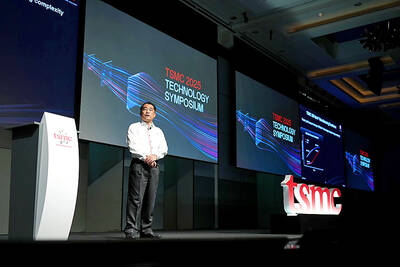US intelligence agencies could be asked to use spy satellites to monitor illegal tuna fishing — especially by Taiwanese boats — in the South Pacific.
The request came on Thursday from Eni Faleomavaega, the Representative from American Samoa.
At a US Congress hearing on renegotiating the South Pacific tuna treaty, Faleomavaega asked witnesses from the State Department and the National Oceanic and Atmospheric Administration (NOAA) if Washington could help island nations in the South Pacific catch tuna poachers.
The witnesses said they didn’t know, but would find out.
“Is our government providing some kind of service to these island nations about tracking poachers or ships that are illegally fishing on their grounds?” Faleomavaega asked.
“We have satellites over there that can pinpoint just about every ant or spider that goes around in the Pacific and I was wondering, as a real help to these island countries that don’t have airplanes, don’t have ships. If they do, it’s so bare that it’s very, very difficult for them to monitor illegal fishing, especially from the Taiwanese boats,” he said.
Clearly referring to “Taiwanese boats” Faleomavaega said: “They’re the biggest culprits in this poaching that’s going on and I imagine there are hundreds of millions of dollars worth of fish that’s been taken illegally because of this.”
“It would be such a tremendous help to these island nations to culture this resource that is so important to them. I always say the ocean is their farm,” he said.
Faleomavaega offered no evidence to support his allegations about Taiwanese boats being involved in tuna poaching.
William Gibbons-Fly, director of the Office of Marine Conservation at the State Department, and Russell Smith, deputy assistant secretary for International Fisheries at the NOAA, agreed following their testimony on the tuna treaty to seek further information on the possibility of providing spy satellite help for the Pacific island nations.
Faleomavaega, chairman of the Asia, Pacific and Global Environment subcommittee of the House Foreign Affairs Committee, called the hearing to determine what US President Barack Obama’s administration’s views were on the status of negotiations over the extension of the current South Pacific Tuna Treaty agreement which expires in 2013.
Gibbons-Fly said the US Coast Guard regularly patrols large areas of the Western and Central Pacific and it does takes action when it encounters a vessel that is fishing illegally.
He said that ships caught poaching were brought into port and the owners were subjected to substantial fines.

DEMOGRAPHICS: Robotics is the most promising answer to looming labor woes, the long-term care system and national contingency response, an official said Taiwan is to launch a five-year plan to boost the robotics industry in a bid to address labor shortages stemming from a declining and aging population, the Executive Yuan said yesterday. The government approved the initiative, dubbed the Smart Robotics Industry Promotion Plan, via executive order, senior officials told a post-Cabinet meeting news conference in Taipei. Taiwan’s population decline would strain the economy and the nation’s ability to care for vulnerable and elderly people, said Peter Hong (洪樂文), who heads the National Science and Technology Council’s (NSTC) Department of Engineering and Technologies. Projections show that the proportion of Taiwanese 65 or older would

Nvidia Corp yesterday unveiled its new high-speed interconnect technology, NVLink Fusion, with Taiwanese application-specific IC (ASIC) designers Alchip Technologies Ltd (世芯) and MediaTek Inc (聯發科) among the first to adopt the technology to help build semi-custom artificial intelligence (AI) infrastructure for hyperscalers. Nvidia has opened its technology to outside users, as hyperscalers and cloud service providers are building their own cost-effective AI chips, or accelerators, used in AI servers by leveraging ASIC firms’ designing capabilities to reduce their dependence on Nvidia. Previously, NVLink technology was only available for Nvidia’s own AI platform. “NVLink Fusion opens Nvidia’s AI platform and rich ecosystem for

Taiwan Semiconductor Manufacturing Co (TSMC, 台積電) yesterday said it is building nine new advanced wafer manufacturing and packaging factories this year, accelerating its expansion amid strong demand for high-performance computing (HPC) and artificial intelligence (AI) applications. The chipmaker built on average five factories per year from 2021 to last year and three from 2017 to 2020, TSMC vice president of advanced technology and mask engineering T.S. Chang (張宗生) said at the company’s annual technology symposium in Hsinchu City. “We are quickening our pace even faster in 2025. We plan to build nine new factories, including eight wafer fabrication plants and one advanced

‘WORLD’S LOSS’: Taiwan’s exclusion robs the world of the benefits it could get from one of the foremost practitioners of disease prevention and public health, Minister Chiu said Taiwan should be allowed to join the World Health Assembly (WHA) as an irreplaceable contributor to global health and disease prevention efforts, Minister of Foreign Affairs Lin Chia-lung (林佳龍) said yesterday. He made the comment at a news conference in Taipei, hours before a Taiwanese delegation was to depart for Geneva, Switzerland, seeking to meet with foreign representatives for a bilateral meeting on the sidelines of the WHA, the WHO’s annual decisionmaking meeting, which would be held from Monday next week to May 27. As of yesterday, Taiwan had yet to receive an invitation. Taiwan has much to offer to the international community’s